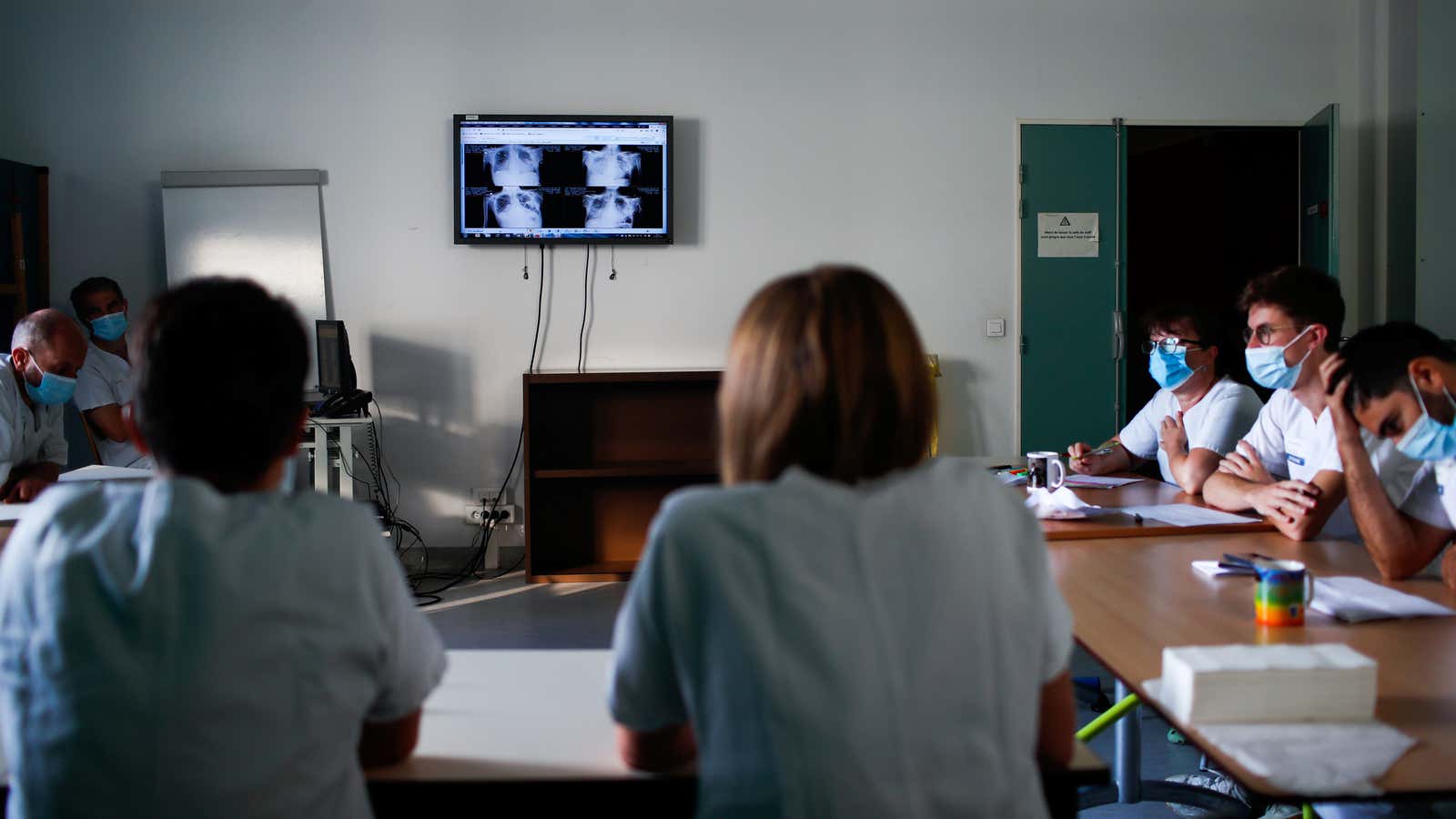Many women have borne the brunt of care work during the pandemic in ways that impact their work. A new study shows that academic medical researchers, who represent some of the most accomplished scientists with decades of education under their belts, are no exception to that trend.
In a new analysis published Sept. 17, researchers from the University of Texas analyzed preprints of papers in medRxiv and bioRxiv—two databases that curate preprints of medical scientific papers and biological scientific papers, respectively—and found that the proportion of papers with female authors had declined in both during the pandemic.
The change was especially dramatic on medRxiv. In January, male scientists were authors on about 20% more papers, a gap that likely exists because there have been historically more clinician researchers who are men than women. By April, however, that figure was over 50%. For papers published in bioRxiv, the publishing gap only increased slightly—from 46% to 47%.
The authors suggest that female clinician scientists—physicians who also publish scientific research, who have gone through the decades of education required to obtain both an MD and PhD—have faced more caregiving duties that have kept them from working at home over the course of the pandemic than their male counterparts.
A single published paper can be the culmination of years of research and analysis, so these figures don’t necessarily reflect a slowdown in experimental work done in labs—though the pandemic has definitely interfered with that, too. More likely, the widening gender gap reflects interruptions in the writing and application process for scientific studies.
That process takes time—and peace and quiet don’t hurt, either. For scientists with children, Covid-19 has made those resources scarce as schools have moved online and families have had to accommodate other caregiving needs. “For women in medicine, the pandemic has added an additional barrier as they juggle increased childcare and domestic duties along with their academic and clinical role,” write Nancy Spector and Barbara Overholser in an accompanying commentary, both of whom are affiliated with Drexel University’s College of Medicine in Philadelphia, Pennsylvania.
The imbalance in publishing could have major impacts on a scientist’s career. Published papers contribute to the overall scientific field, but they also lead to notoriety, which can influence who gets promotions to run labs or head other departments. The pandemic’s impacts on publishing could slow the already-sluggish progress seen in narrowing the gender gap in the medical sciences.
This publishing gap may be particularly problematic for early-career scientists, whose careers have yet to gain a stable footing. The solution to making sure these scientists don’t fall behind rests in the hands of their more senior colleagues: More seasoned researchers can work to ensure their younger colleagues’ work gets published so they don’t fall behind.
The University of Texas analysis can’t definitively say that domestic inequality contributed to the publishing gap. Their analysis used a program called Gender API to determine the likely gender of the authors on nearly 50,000 papers across the two archives, which could misgender some authors. And, of course, it’s impossible to tell how many of the authors on papers are also parents.
However, given previous work in this area, it wouldn’t be surprising if caregiving burdens were the reason for these disparities. Work from the University of Michigan from 2019 found that female scientists were more likely to skip out on conferences because of family obligations. Other work shows women generally take on more caregiving for loved ones with mental illness and dementia.
Regardless of cause, the gap is undeniably widening—in other scientific disciplines, too. Similar trends have played out in biology and the physical sciences, and women have authored only about a third of new papers on Covid-19. If academic institutions want to support scientists of all genders, they’ll need to make sure that all are equally able to balance work and home life.
